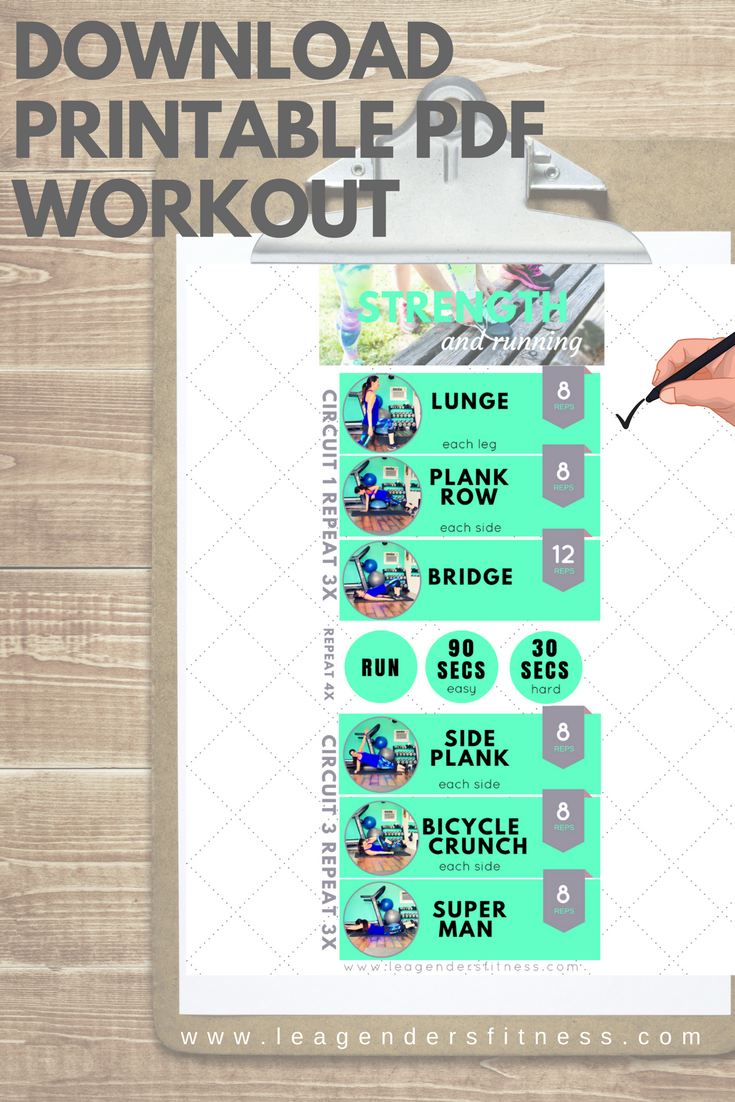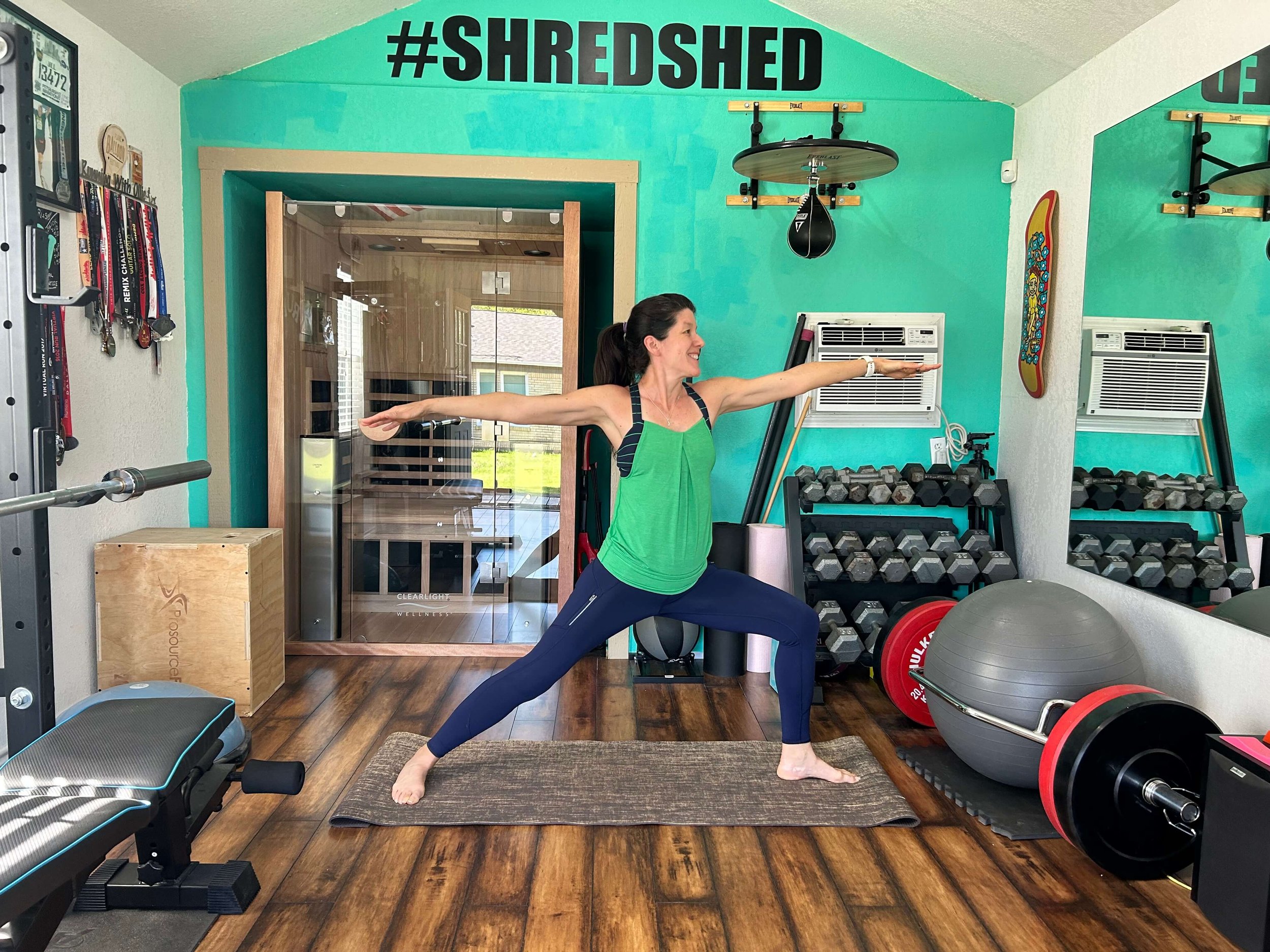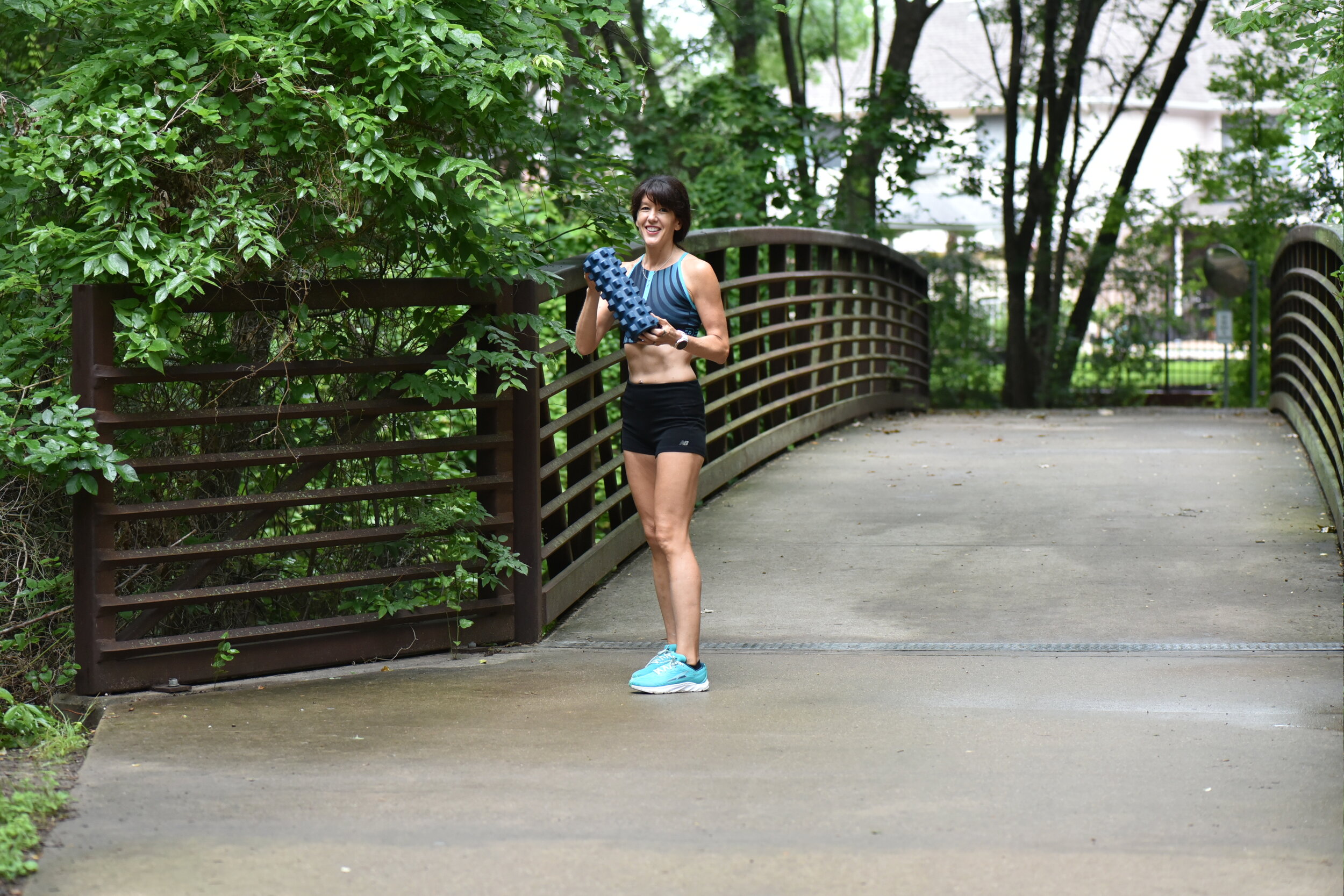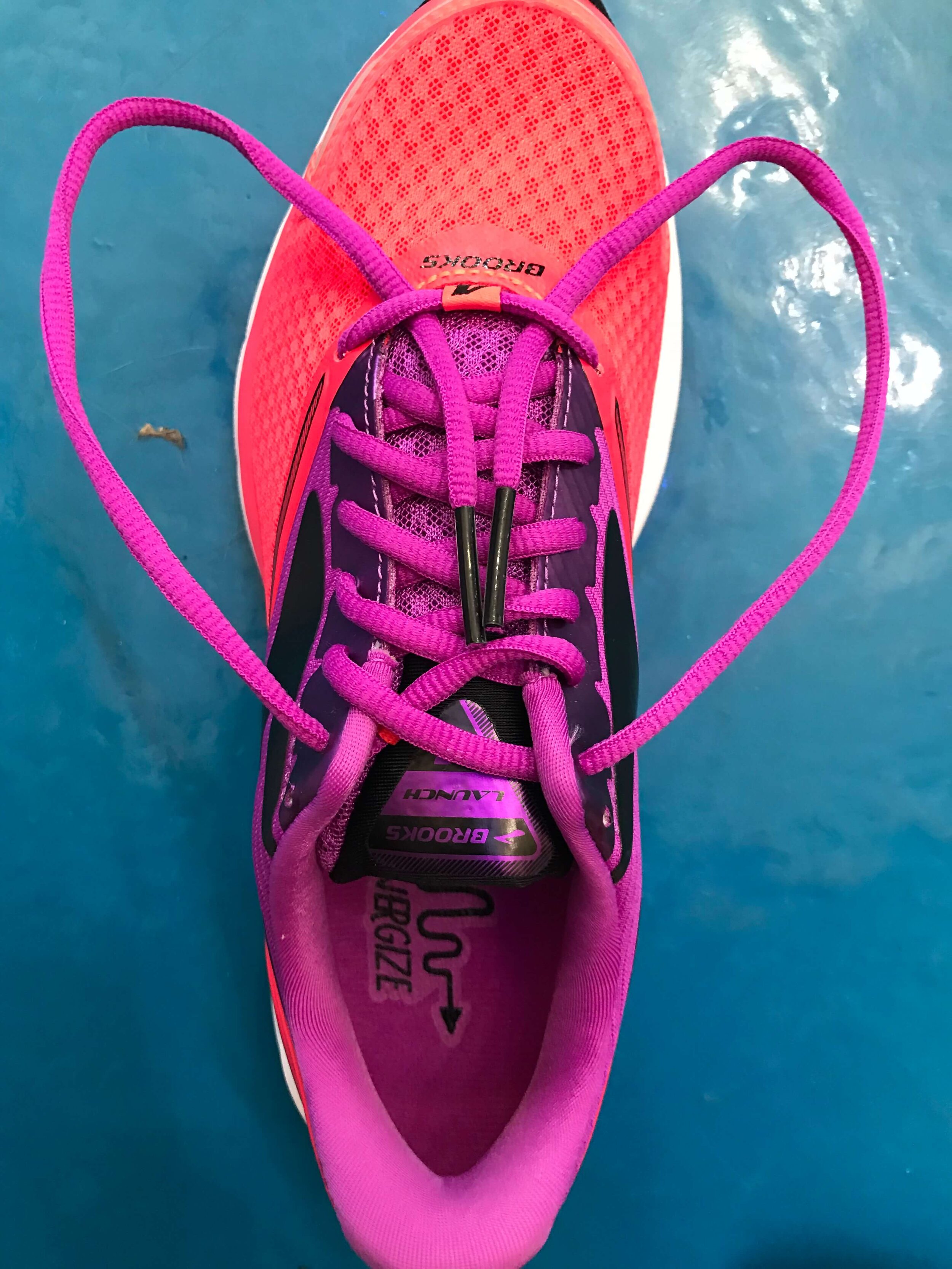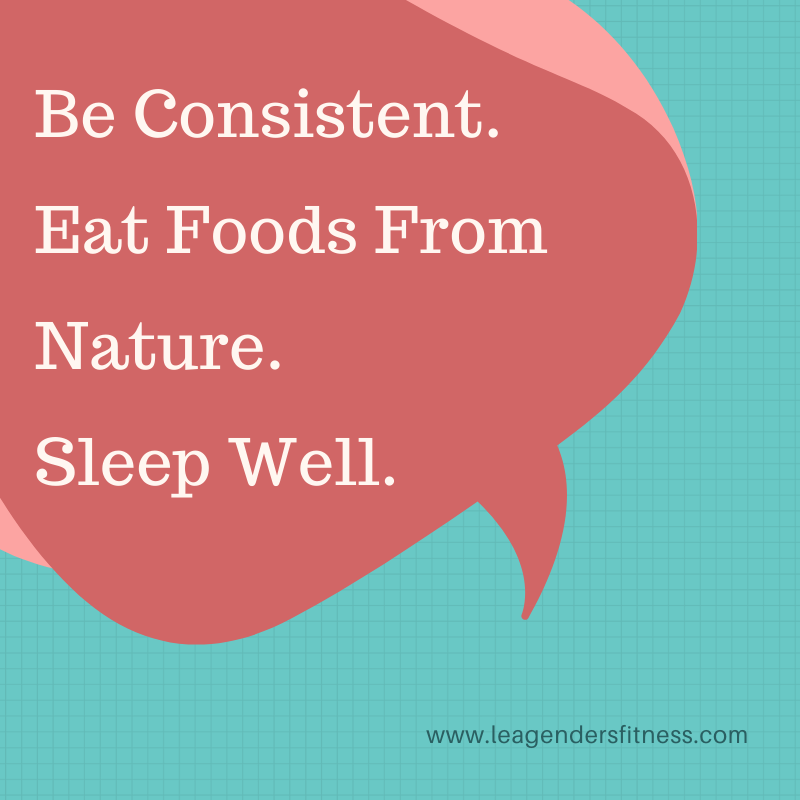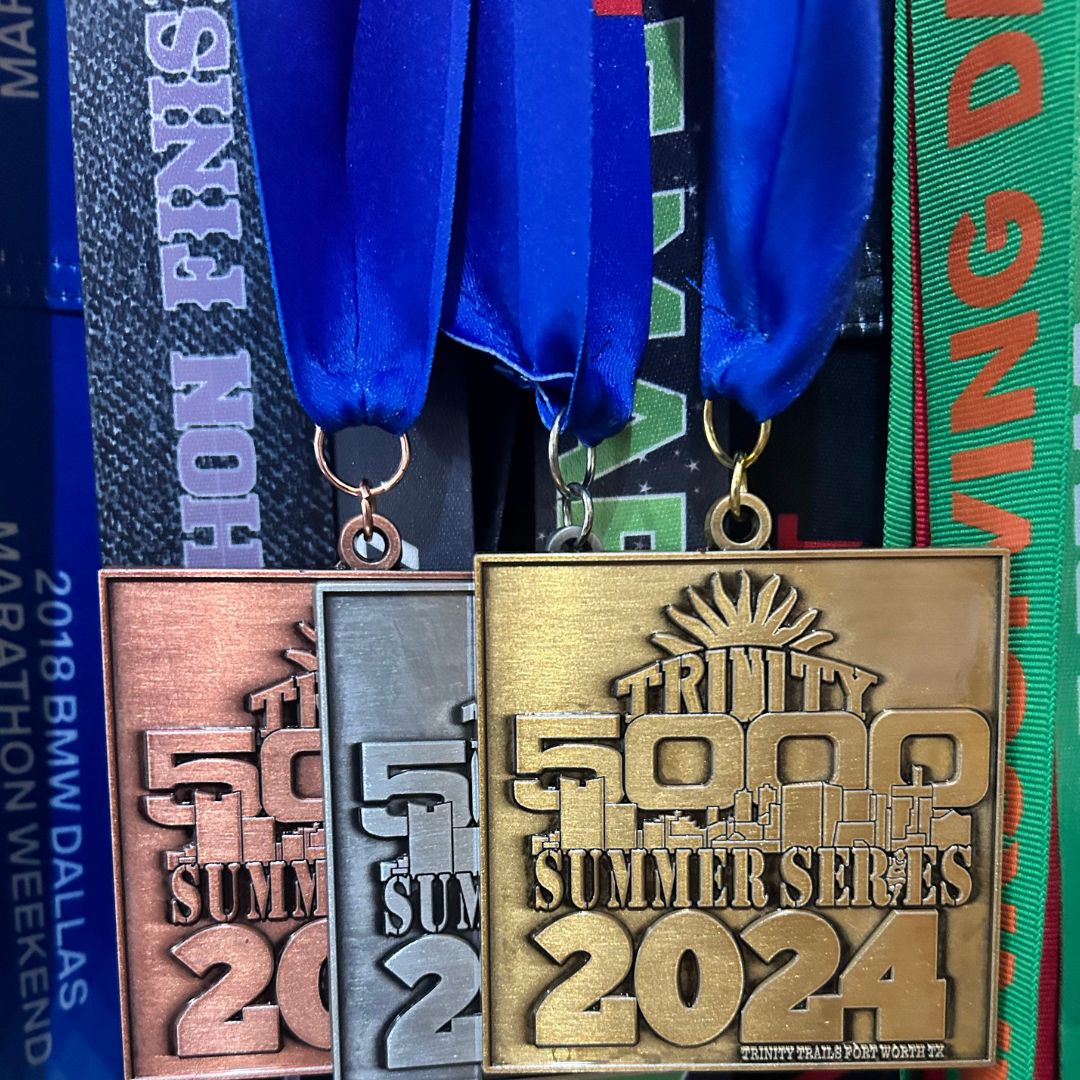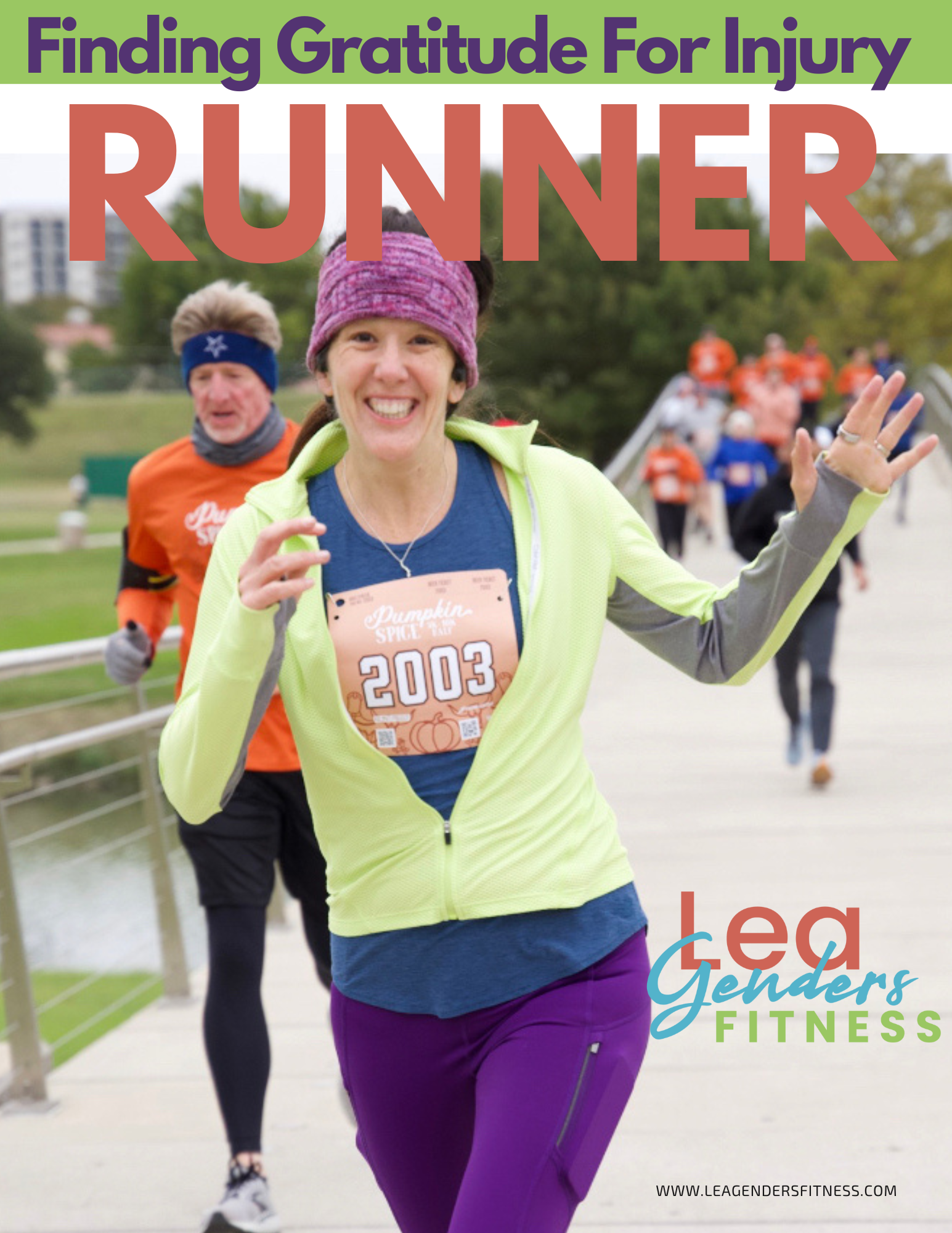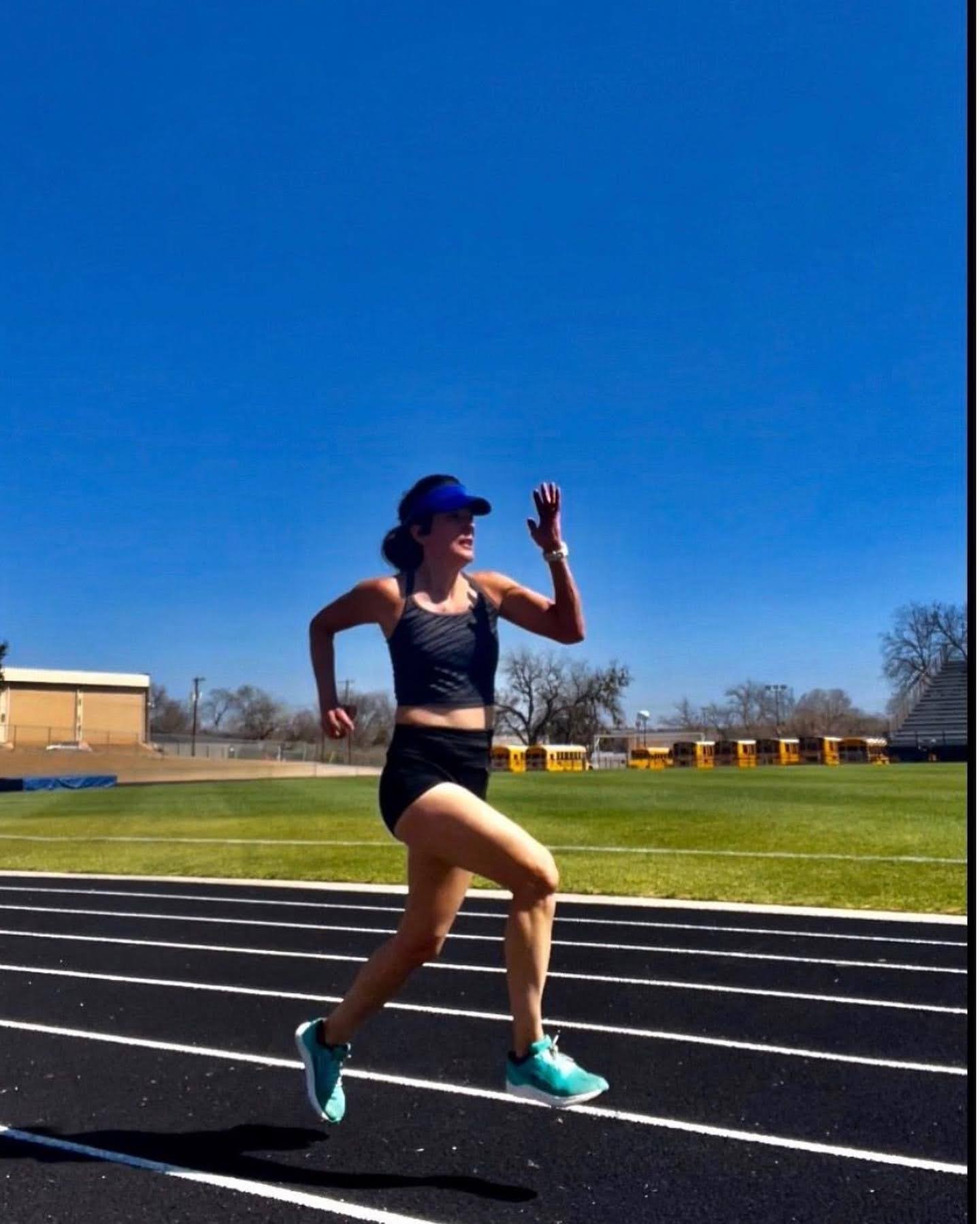Welcome to the latest edition of workout Wednesday when each week I share a running or runner-specific strength workout. This week you are getting the best of both worlds because we are combining strength moves with a running interval workout. It's a great way to get in your strength and running in on the same day. This works best in a gym setting when you have access to a treadmill, but you could certainly do the run portion outdoors with a timer.
strength and running workout. Free PDF printable download. Save to Pinterest for later
CIRCUIT ONE
There are three exercises in the first circuit. Move through all three exercises with little to no rest. Move swiftly but not so fast that you sacrifice form. Proper form is always more important than speed. After you complete the exercises, take a short rest or water break and repeat two more times.
LUNGE
Starting with your feet hip width apart and your toes pointed straight ahead, engage your core and keep your back straight. Take one large step with your right leg to lunge forward until your front knee is lined up over your ankle and your back knee is nearly touching the floor. Once you are in the lunge position push back up to starting position. Perform 8 reps on each leg.
PLANK ROW
Start in a straight-arm high plank position with your wrists directly under your shoulders and your legs slightly wider than hip width for stability. Keep your body in a straight line from your shoulders to ankles while engaging your core. Do not allow your hips to hike up or sag down.
With your core tight and your glutes engaged lift your right elbow to row as you bend your elbow up toward the ceiling. Keep your elbows close to your side, do not allow them to flare out. You can do this exercise with or without weights. Perform eight reps on each side
BRIDGE
Lie on your back with your knees bent and push your hips off the floor so your body is in a straight line from your shoulders to your ankles. Push your shoulders into the mat. Squeeze your glutes and engage your abs. Pause for 1-2 seconds at the top of the the move. Perform 12 reps.
CIRCUIT TWO: RUN
Run for 90 seconds at an easy effort pace, then run for 30 seconds at a hard effort. Your hard effort pace should leave you out of breath. Repeat for a total of 4 cycles.
CIRCUIT THREE
Move through the three exercises with little to no rest. Complete the circuit three times
ELBOW PLANK TO SIDE PLANK
Position your elbows on the floor with your shoulders directly over your elbows. Your body should be in a straight line parallel to the floor. Engage your core while breathing normally. Squeeze your glutes. Be careful not to sink your hips or raise your butt in the air. Do not clasp hands in front as this throws off your alignment.
Twist up into an elbow side plank position with your shoulder directly over your elbow. Don't allow your hips to drop. Hold the position for 1-2 seconds in the top position. Alternate sides and perform eight reps.
BICYCLE CRUNCH
Lie flat on the floor with the lower back pressed into the ground. Place your hands on either side of your head, do not lock your fingers or pull on your head. Lift your head and shoulder off the floor and touch your right elbow to the left knee. At the same time, straighten your right leg, keeping it several inches off of the floor. Alternate sides to repeat the motion you'd make while pedaling a bicycle. Perform eight reps on each side.
SUPERMAN
Lie face down on the floor with your arms extended in front of you, raise your arms, chest and thighs off of the floor (like you are flying like superman) Pause for 1-2 seconds at the top position. Perform eight reps.
Download a printable version of this workout.
Give it a try and let me know how it goes in the comments, on Instagram or on Twitter.
Take a rest day or schedule easy effort paced-runs in the day or two following this workout. Always allow proper recovery after a high intensity workout. Adaptation (getting stronger and faster) happens during the rest period after the workout, not during the workout itself. If you don't allow your body the proper recovery time you won't see the full benefit of your workouts!
Questions? I'd love to help.
Like this post? Know someone who would benefit from it? It helps me when you share with your friends and followers.



